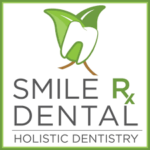Brushing and flossing are both important for your oral health. Both should be done together.
The goal of flossing and brushing is to remove plaque buildup. Plaque consists of active colonies of destructive bacteria, which basically eat and then excrete on our teeth. Brushing only removes plaque from the front and back surfaces of your teeth.
Flossing, on the other hand, allows you to remove plaque from between your teeth and underneath the gums. These hard-to-reach spots are where the most destructive microbes live. Failure to remove plaque from these areas can cause gum disease, such as gingivitis or periodontitis.
To take full advantage of the benefits of flossing, you need to first learn the correct way to floss. Proper flossing involves wrapping the floss in a ‘c-shape,’ and covering as much surface area of the tooth as possible. You should cover about half the diameter of the tooth from each angle. Make sure to move the floss up and down along the outer surface and under the gum tissue, This way, the floss will clean plaque from both the outer and inner surfaces of your teeth, as well as beneath the gum tissue.
While brushing and flossing may sound simple, research suggested that most people significantly neglect brushing oral surfaces and use floss insufficiently.
Regular flossing can also help limit the development of cavities, but you must make it a habit. Proper dental flossing relies greatly on self-monitoring and its correct use.
Not only can proper oral hygiene help keep your breath fresh and your teeth and gums healthy, it may also help prevent periodontal disease. Periodontal disease, in turn, is a risk factor for cardiovascular disease and diabetes. Because of this, practicing good oral hygiene may help keep more than just your mouth healthy.
Next time you reach for your toothbrush, remember to reach for your floss as well. The simple habit of flossing at least once a day may improve not only your smile but your overall health, too.

